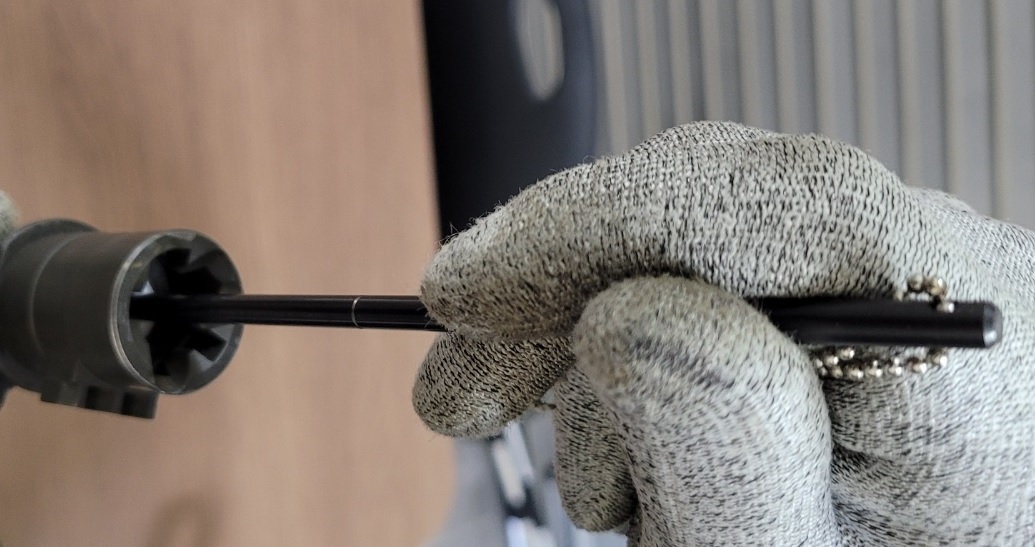Rifles are the most used weapons on the battlefield, and soldiers fire dozens to thousands of rounds of ammunition with rifles and consume them all at once. In addition, the mission must be performed through various shootings according to the situation, such as single shots and continuous fire. As such, the rifle is a very important weapon in national defense, especially in the individual combat system, and is responsible for the beginning and end of the battlefield. But if you go to war and your rifle fails to fire due to a defect, I hate to imagine the aftermath. Since soldiers go to the battlefield believing that the rifles they possess can shoot in necessary situations without any defects, the reliability of rifles is a very important matter that is directly related to the survival rate of soldiers.
The durability of a rifle is an important link with soldiers’ survivability and combat power. Then, while developing these rifles, rifle development and manufacturing companies, how much do durability tests for “real-war situations”? Isn’t it simply going through the test to pass JUST test rather than the real-war situation?
Firearms such as rifles and machine guns shot more frequently than single shots. Considering the number of shots that can be fired at one time in actual battlefield conditions, the survival rate of the shooter and allies increases when they can shoot continuously at about 500 or more. Also, it must be possible to fire continuously so that it can literally be called a machine gun. In addition, in actual war, there will be frequent situations in which a large amount of ammunition is fired in a short time, then the barrel is cooled through natural cooling and then fired again. If so, the test evaluation should be conducted by reflecting these cycles and environments.
We have checked that various firearms in developed countries are accurately evaluated according to the NATO regulations.
NATO regulation
NATO STANDARD, AEP-97, MULTI-CALIBRE MANUAL OF PROOF AND INSPECTION (M-CMOPI) FOR NATO SMALL ARMS AMMUNITION
- 5.56mm auto rifle: p. 559
- 7.62mm auto rifle: p. 563
Many firearm development companies must manufacture under these regulations so that their allies can use them with confidence. However, it seems that there are many firearms that are not tested and evaluated according to NATO regulations. Moreover, if small parts are damaged on the actual battlefield and the rifle does not function properly, the will to fight will be lost and the survival rate of the military will be drastically lowered. In order to prevent this situation, part damage should be reflected in the test evaluation and improved, but in some cases, it is regarded as a natural part replacement factor and overlooked.


The ammunition used in the rifle must also be manufactured to match the characteristics of the rifle. Ammunition is recognized as a consumable item used only for rifle evaluation without separate test evaluation. Wouldn’t it be right to test and evaluate the ammunition through real-range shooting and measurement (100% impact and penetration into a steel plate of a certain thickness at a certain distance)? If it is evaluated only with the simple muzzle velocity and the kinetic energy value calculated simply by the muzzle velocity and the ballistic formula, it can be said that this is an inappropriate evaluation method. However, ammunition companies are still manufacturing/supplying in the same way as before with the idea that individual combat performance can be improved by unchanging test evaluation method and enhancing rifle technology.
The durability measurement of a rifle goes through a repetitive process of firing a set number of shots, forcibly cooling it in air, and shooting again after a certain amount of time has elapsed. The degree of spread of the barrel is measured for each process, and the maximum number of shots is determined up to the extent that it is out of the designated range.
This method is different from the automatic rifle test evaluation method prescribed by NATO. I think it is fatal for soldiers who actually have to wage war. A soldier has the right to own a rifle that must fire more than 20,000 rounds of ammunition with the rifle. In order to achieve military survival and victory on the battlefield, it must be tested and evaluated according to NATO regulations and made available to soldiers. A country where soldiers can trust and supply reliable rifles and ammunition on the battlefield will be a strong country that can always win in war.

![[DR Column] We must upgrade the durability of small-arms to win the war](http://duretek.com/wordpress/wp-content/uploads/2023/01/cropped-KakaoTalk_20230111_155705384_09.jpg)
![[DR Column] We must upgrade the durability of small-arms to win the war](http://duretek.com/wordpress/wp-content/uploads/2023/02/총열-게이지-측정-모습-303x300.png)